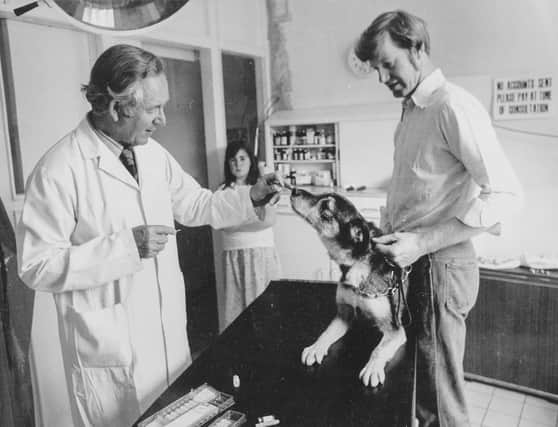FARMING: You’d be amazed by what animals will eat!


In the majority of cases, this is not the cause of the vomiting. However in some instances a ‘foreign body’ is the issue. Vets refer to any object that should not have entered the gastro-intestinal system as a ‘foreign body’.
Sometimes, the owner’s report of their animal’s behavior can give us an idea that we may be dealing with a foreign body. They may have actually seen their pet eat something unusual, or the animal may have previous form for picking up objects and swallowing them.
Advertisement
Hide AdAdvertisement
Hide AdIn some instances, examination of the pet may lead us to be suspicious of a foreign body. Palpation of the abdomen may identify a stone lodged in the intestines. As the stomach sits behind the ribs, objects stuck here are not so easy to feel.
In other cases, an x-ray of the abdomen may highlight the problem. However while dense objects such as stones and metal are easy to identify, less-dense objects such as socks, may not be so obvious on an x-ray.
Some small foreign bodies may manage to make their way through the stomach and intestines
uneventfully, but larger objects may need to be removed. This is commonly undertaken by performing abdominal surgery and entering into the gastro-intestinal tract to locate and remove the offending article.
Advertisement
Hide AdAdvertisement
Hide AdWhilst the majority of the time the operation to remove a foreign body goes smoothly, it is not without potential complications. In some cases, if the offending object has damaged the gut badly, a portion of gut may need to be removed. In other situations, if the gut is perforated by the object before it can be retrieved, there is a risk of life-threatening infection and sepsis.
Dogs certainly make up the greatest proportion of animals we see with foreign bodies. Cats seem to be more discerning about what they stick in their mouths! However cats do tend to favour ‘linear foreign bodies’- which are often thread or ribbon. These linear foreign bodies can be very tricky to remove- as they catch in the intestines and cause them to bunch up like a concertina.
The most common canine foreign bodies removed in our practice are stones, seaweed kelp and
corn-on-the cob! All are very hard objects that do not soften to allow passage through the intestines.
Advertisement
Hide AdAdvertisement
Hide AdSome more unusual foreign bodies that have been removed have included- 4 golf balls from one dog’s stomach, pipe-cleaners and hair bands in a small puppy, a wooden Christmas tree decoration, a fifty pence piece, and ladies underwear in one particularly greedy Labrador!
One of the highlights of veterinary medicine is how animals can continue to amaze you. Even the most experienced vet can be surprised by what our furry friends are prepared to eat!